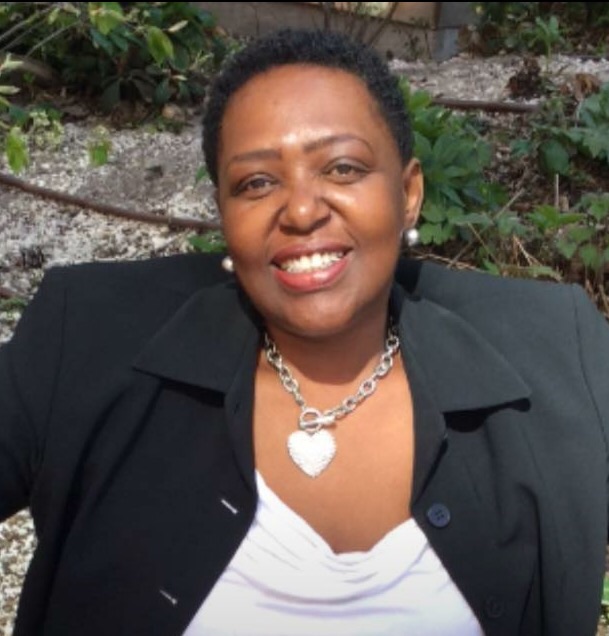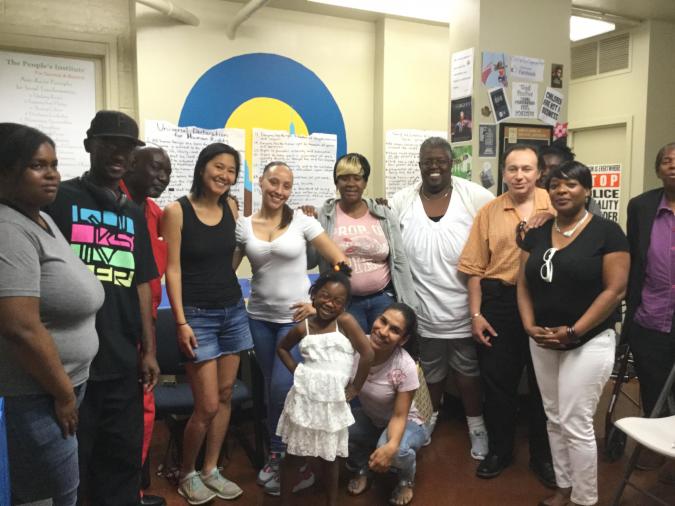Want to start your own project but need some inspiration? Our Learn from a Leader blog series is profiling past ioby Leaders who succeeded in bringing more fresh food, active transport, green spaces, and other healthy improvements to their neighborhoods. Read on, and imagine what you could do on your block!
about the project
The Child Welfare Organizing Project (CWOP) was thrilled when they heard they could partner with the Food Bank for New York City to feed their community healthy food at no cost. Just one catch: they had to upgrade their kitchen to commercial standards.
Joyce McMillan, CWOP’s Director of Programming and Lead Parent Advocate, heard about the partnership opportunity while attending a class about building nonprofit capacity. She knew her organization couldn’t pass up the chance to offer nutritious free meals to the people who participate in their programs, so she took action to get the upgrade started.
The steps:
- Get specific. I talked with the Food Bank about exactly what we would have to do to complete the upgrade. It turned out that we needed three sinks, a backsplash, new cabinets, new countertops, some under-sink mounts and lots more! It was a whole slew of things, but once we had our list laid out, it seemed manageable.
- Bang out a budget. We looked at and priced lots of items online, and then took a field trip to Home Depot to check everything out in person. Naturally, we wanted to get a good price for everything, but we also didn’t want to have to do this project again anytime soon, so we were also in the market for the most durable equipment we could find.
- Seek help from within. One of the parents who attends our programs works with contractors and construction workers. He was able to help us find a contractor who would give us a break on the price, as well as people who could install everything. He helped us take measurements and shop for everything, too. It’s always good to start with your community when you need help with something, as these people already feel a connection to your work.
- Diversify your fundraising. When it comes to raising money, however, it can be good to branch out more: you don’t want to wear people out by asking them again and again. For this campaign, I reached out to a few personal friends, but I also asked people who come to our weekly workshops and actually benefit personally from what we do. I encouraged them to give financially if they could, or to at least spread the word to their networks if they couldn’t. We also asked our board and other friends to advertise our campaign on their social media, and we sent some personalized letters, many to former clients. The final key to our success was passing the plate—literally! Remember that some people don’t use the internet, so make sure you offer physical opportunities (in a meeting, at a fundraising party, etc) for them to donate cash or checks.
- The domino effect. Now that we’ve got our money raised and materials picked out, we just need the old kitchen items to be removed and the new ones put in. And at least one of our staffers will need to pass an online food and safety test. Then the Food Bank will come to inspect the site and make sure we’re ready to go. After all that, we can get back to business as usual—except with better food and more of it!
Time/timing:
An organization can take a project like this on at any time of year. I have to say the time and effort outputs were minimal—especially with all the strategic help we got from ioby! From start to finish, the project should be done in less than two months. During the first 15 days, we discussed when to do our soft and public campaign launches; the second 15 was our fundraising crunch. Once we have all the new kitchen items on site, the implementation should take less than two weeks.
Budget:
Most of our $5,886 budget went to the kitchen items themselves, but we’re also paying our contractor and workers. Always ask if you can get a nonprofit discount on the goods or services you’re purchasing! Many people offer one.
About the author:
Joyce McMillan is the Director of Programming and Lead Parent Advocate at the Child Welfare Organizing Project (CWOP). Joyce left a position as a team leader at the State of New York after being affected by the New York child protection system; she is now dedicated to transforming the system to better protect and preserve families. She has lectured at The New School, Montclair University, Hunter College, Columbia University, and Harlem Hospital.

Feeling inspired? Want to take action in YOUR neighborhood? If you have awesome ideas about how to make your town greener, safer, and more fun, let us help! Tell us your awesome idea right here. We’d love to help you get started today.
